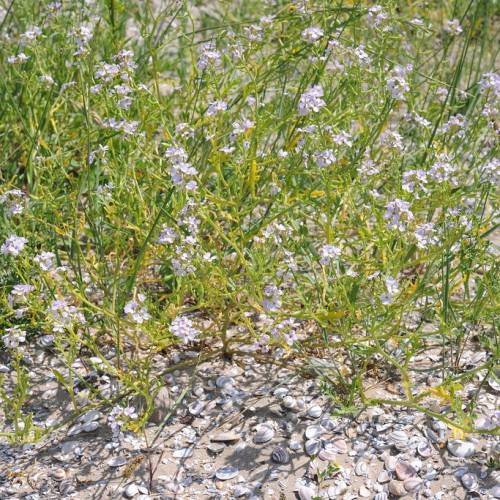
European Searocket
Cakile maritima
Watering:
Frequent
Hardiness Zone:
Sun:
full sun
Leaf:
Yes
Growth Rate:
Low
Drought Tolerant:
Yes
Salt Tolerant:
Yes
watering
American Sea Rocket should be watered deeply and infrequently. During its growing season, water it every 1 to 2 weeks, allowing the soil to dry out in between watering. In the winter months, reduce watering to once per month. When watering, ensure the soil is thoroughly saturated for roots to develop. Overwatering can cause root rot and disease, so it’s important to water correctly. You can determine when your plant needs water by paying attention to the leaves. If they are wilting, it’s time to water.
sunlight
For American Sea Rocket to thrive, it requires full sun exposure throughout the day. When grown in areas with plentiful sunlight, it may benefit from partial shade during the mid-day hours in order to prevent the plants from becoming too scorched. During the late spring to early fall months, American Sea Rocket requires around 6-8 hours of direct sunlight. During the winter months, the plants can tolerate full morning sun with a few hours of indirect light in the afternoon. In hot climates, plants should be exposed to afternoon shade in order to prevent sunburn.
pruning
American Sea Rocket should be pruned unifromly and only as needed to maintain the desired shape. Pruning is best done during the spring, when the new growth starts to appear. The best time for pruning is after blooming has ceased and in late winter. To keep the plant looking tidy and is done to shape and control the growth pattern, it is better to prune it back by half - within about 6 - 12 inches of the outer edge of the plant. Care should be taken to avoid cutting into the old growth as this can damage the plant. Pruning should also be done to remove dead or diseased branches as well as the flower heads.
